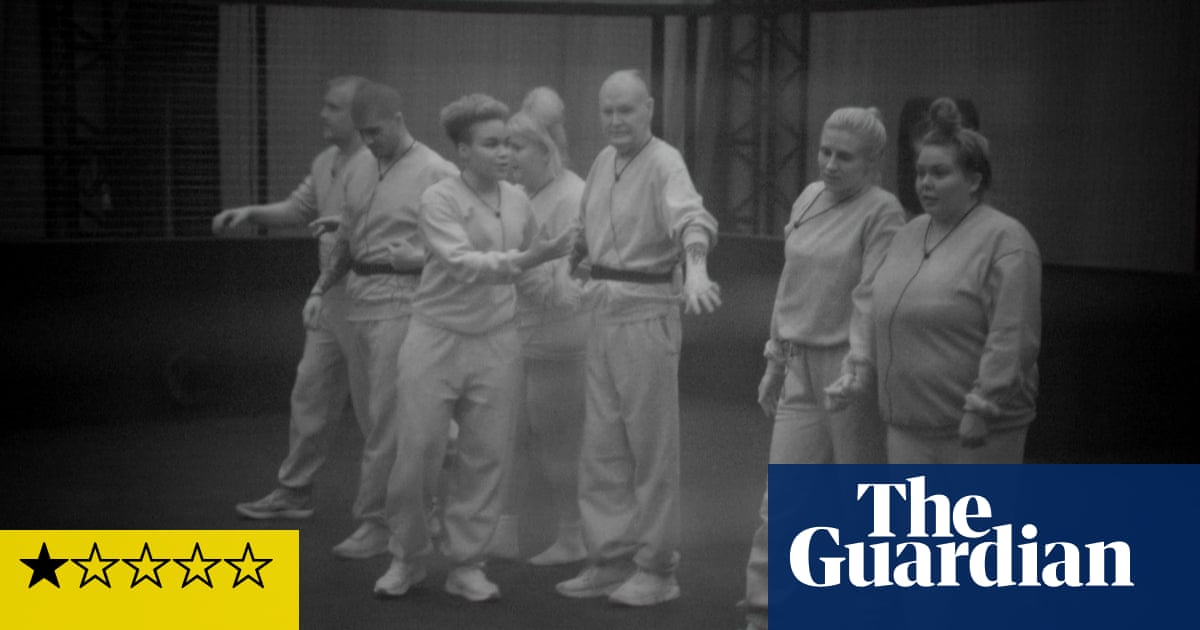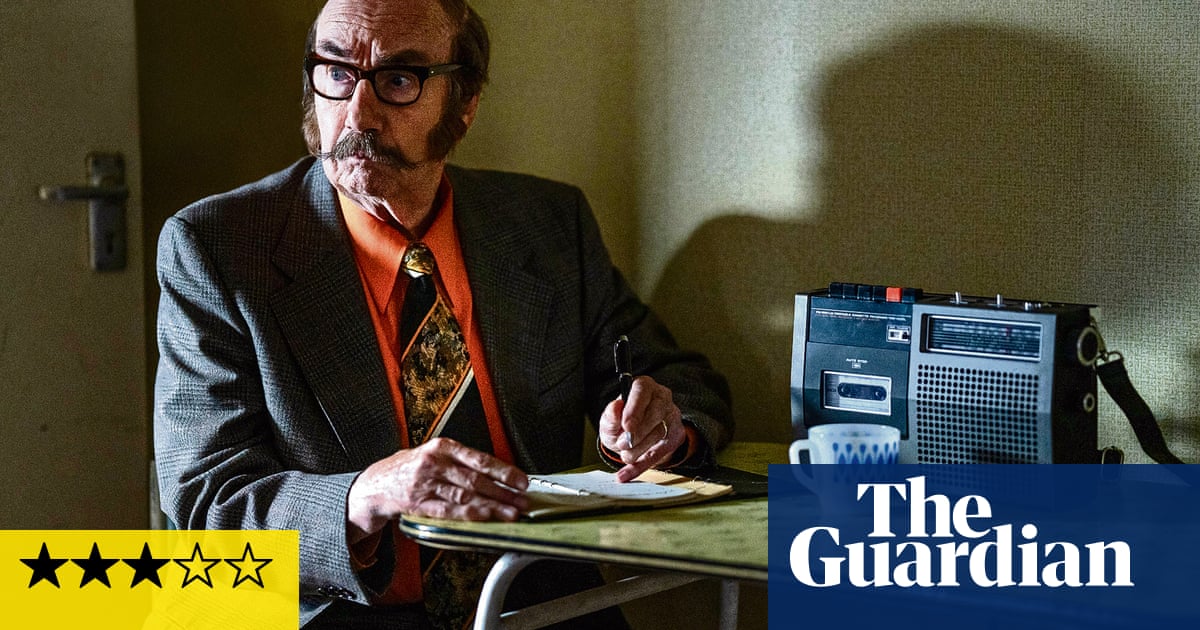
ere they stand, two big black elephants, their trunks raised in greeting. Elephants never forget, and these symbols of ancestral wisdom are clothed in sewn-together Oxford academic gowns, their ridiculous tassels forming the animals’ tails. Referencing the dances of the Nyau secret society of the Chewa people in Malawi, who wear costumes fashioned from cut up materials, the elephants stand beneath national flags, themselves spliced together and reimagined as colourful multinational banners. Symbols of hope, then, abstractions of a better world in Samson Kambalu’s New Liberia at Modern Art Oxford. Leaning against the walls are cinema signs, loosely describing the action in a couple of the jerky, black and white short films projected on the walls in another gallery. “In a distant land by the water, a man crouches down to sculpt leaves on a tree out of thin air,” reads one.
And there he is, the artist earnest at his task, picking at the air as the leaves appear as though by magic on the little tree, in one of Kambalu’s short, improvised films. Many of these hokey little routines and filmic skits, which he has been making for years, can also be found on the artist’s YouTube channel. In another, he appears to be walking right through the brick buttresses of a cathedral, a feat only made possible by stopping and restarting the camera. And here he is again making an 18th-century drawing (so the caption tells us), but all he appears to be doing is making frantic, swiping gestures over a large drawing board in a fusty room.
A reputation for erratic, not to say eccentric behaviour is not uncommon among certain university dons. In his short film Don, we see the artist, a professor at the Ruskin School of Art and fellow of Magdalen College, Oxford, striding down the steps of the university and along the street, while everyone around him walks backwards. Kambalu had to perform his short walk in reverse. Run backwards, who’s out of step now? Kambalu’s DIY cinema has always intrigued me. Mostly silent, jolting and shot in grainy monochrome, the principal character is always the artist himself, who sometimes persuades passersby to hold the camera and film his brief, improvised actions. All these bits of business follow a self-invented set of rules, which include that these clips last no more than a minute, that the performances should be spontaneous, that there should be a “conversation between performance and the medium of film”, that acting should be “subtle but otherworldly, transgressive and playful”; that the aesthetics should be limited to primitive film and silent cinema. Like those elephants, Kambalu’s films allude to Nyau dances, which are predominantly short and energetic. The artist’s playfulness is also a mask for serious, complex intent.
The Malawi-born artist also regards himself as working in the spirit of situationism, and one of the key works here is an HD video, over two hours long, following the proceedings of a court case in Ostend, after the artist was sued over his use of the archive of situationist Gianfranco Sanguinetti, which Sanguinetti had sold to Yale University. In 2014, Kambalu discovered the archive and photographed it over four months, reusing the material in an installation in the 2015 Venice Biennale. Sanguinetti sued for infringement of copyright – demanding that work be taken down, and all copies of the biennale catalogue pulped – then sued again when the work was shown for a second time at a museum in Ostend in 2020.
A video of the Ostend court proceedings is shown in a small room that looks like a cell, with Sanguinetti’s scribblings and the hand-drawn grids of the Game of War, a board game devised by fellow situationist Guy Debord reproduced directly on the walls, like a prisoner’s graffiti. This material was also found among the papers in the archive at Yale. Few visitors will stand and watch the entire court case here, though it is very much worth the time. The case hinges on the revolutionary politics and murky internal intrigues of situationism on good and bad faith and the idea of the gift and potlatch, and on Kambalu’s reuse of Sanguinetti’s archive as artwork. The film tells us a great deal about situationism (there was an art history expert on hand) and about Kambalu’s artistic process, appropriation and freely distributed ideas and knowledge, and both situationist and Malawian concepts of the gift. Even though the case’s outcome was far from certain (the artist’s nervousness is evident in the recording) it is no spoiler to say that that Kambalu won the case in the Belgian court.
There is always more than meets the eye, and a lot to unpack, in Kambalu’s art, which often draws on the history of Malawi and Kambalu’s own childhood. The maquette for his Trafalgar Square fourth plinth proposal is here, too, a work that both uses the form of conventional commemorative statuary, and is a timely antidote to colonialist monuments. In Kambalu’s model, Malawian preacher and radical reverend John Chilembwe stands beside his friend, the white missionary John Chorley. Based on the last known photograph of Chilembwe before he was killed in 1915 during the uprising he provoked by demanding independence for Malawi 50 years before it came about, the two are both dressed formally, and both wear hats.
This is significant. In colonial Nyasaland (as Malawi was then known), black men were expected to remove their hats, and sometimes even their shoes, when in the presence of white people. This disgusting rule reinforced black inferiority. The maquette is surrounded by enlarged photographs of the church founded by Chilembwe, destroyed by colonial government troops after the recapture of the adjacent village from the rebels in 1915. The photographs of the wrecked chapel are accompanied by excerpts from the commission of inquiry into the Nyasaland uprising, a couple of pages of which we are invited to read aloud. This is problematic, given the racial slurs and use of the N-word in the transcription. We are meant, I think, to stumble and to be angered. I know I was. This is surely intended, but the constant shifts in tone and register throughout the exhibition don’t entirely work, even though the cultural collisions at play here – between the legal and the artistic, the political and the folkloric, the humorous and the shocking – should make the sparks fly.












